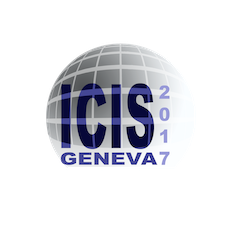Speaker
Description
Microscopy has spurred development in many fields and has been an integral part of scientific development for more than hundred years. Any form of microscopy is limited by the wavelength of the probe used. Microscopy using fast protons with a wavelength of ~10s fm has several advantages over traditional forms of microscopy. A MeV proton mainly interacts with substrate electrons. Due to the mass mismatch between protons and electrons a proton beam will follow a practically straight path in material. In proton-electron collisions the substrate electrons just get enough energy to break bonds within a range of ~1 nm of the original proton track. Current proton microscopes are typically very large, are not user-friendly and have an ion source brightness which is typically several million times less compared to competitive beam sources. We have demonstrated the potential of proton beam writing (PBW) as a promising candidate for next generation lithography down to 19 nm.
Through the implementation of a nano-aperture electron impact gas ion source (NAIS) we have shown breakthrough results, opening up the way to improve ion beam brightness by a million times [1,2]! This will have major implications. Firstly, it potentially allows the spot size for fast protons to breach the single digit nm regime. Secondly, it allows the possibility of miniaturizing the size of a proton microscope to that of a table top system [3]. This will allow us to design a proton microscope with lithographic capabilities that are better than state of the art electron beam writing systems and possibly breach the 1 nm feature size in lithography.
The NAIS chip tests are performed inside a JOEL JSM-5600 tungsten filament scanning electron microscope. A focused electron beam is injected into a NAIS chip to ionize gas, subsequently an ion beam is extracted from the NAIS chip through DC bias across the chip. The NAIS is aimed typical dimensions below 1 µm and ~ 1 eV energy spread, with an expected hydrogen reduced brightness of ~ 10$^6$ A/(m$^2$srV). Unlike point ion sources, the NAIS has low emitting current density but with high angular current intensity, resulting in low Coulomb effects and large range of operating probe current. The NAIS chip fabrication process is optimized aiming for high brightness and low energy spread. In this paper we will discuss the latest results on this optimization process and performance.
Acknowledgement
We acknowledge the support from National Research Foundation, NRF-CRP13-2014-04.
References
[1] Liu N., Xu X., Pang R., Raman P.S., Khursheed A., van Kan J.A., "Brightness measurement of an electron impact gas ion source for proton beam writing applications" Rev. Sci. Instrum. 87 (2016) 02A903.
[2] Xu X., Pang R., Raman P.S., Mariappan R; Khursheed A., van Kan J.A., "Fabrication and development of high brightness nano-aperture ion source" Mic. Elec. Eng. 174 (2016) 20-23.
[3] Xu X., Liu N., Raman P.S., Qureshi S., Pang R., Khursheed A., van Kan J.A., "Design considerations for a compact proton beam writing system aiming for fast sub-10 nm direct write lithography" NIMB 404 (2017) 243-249..
